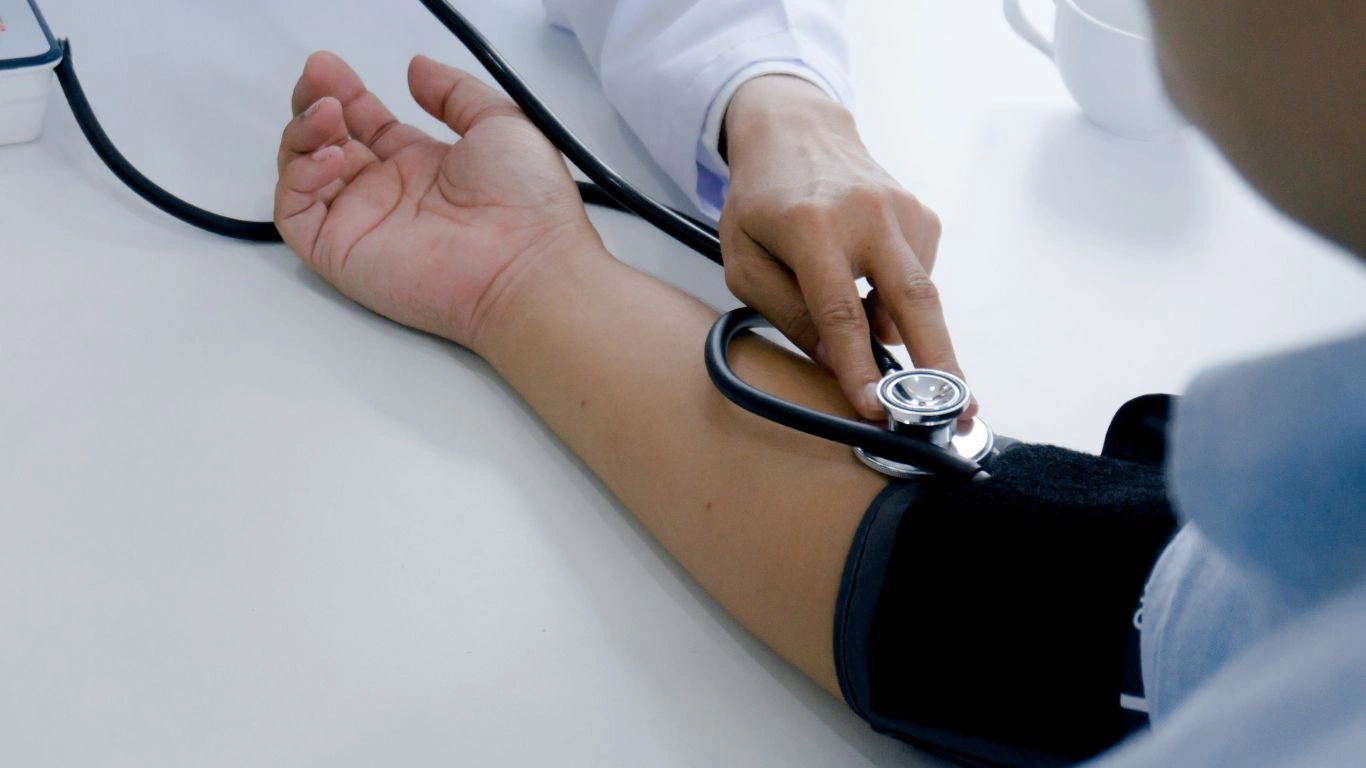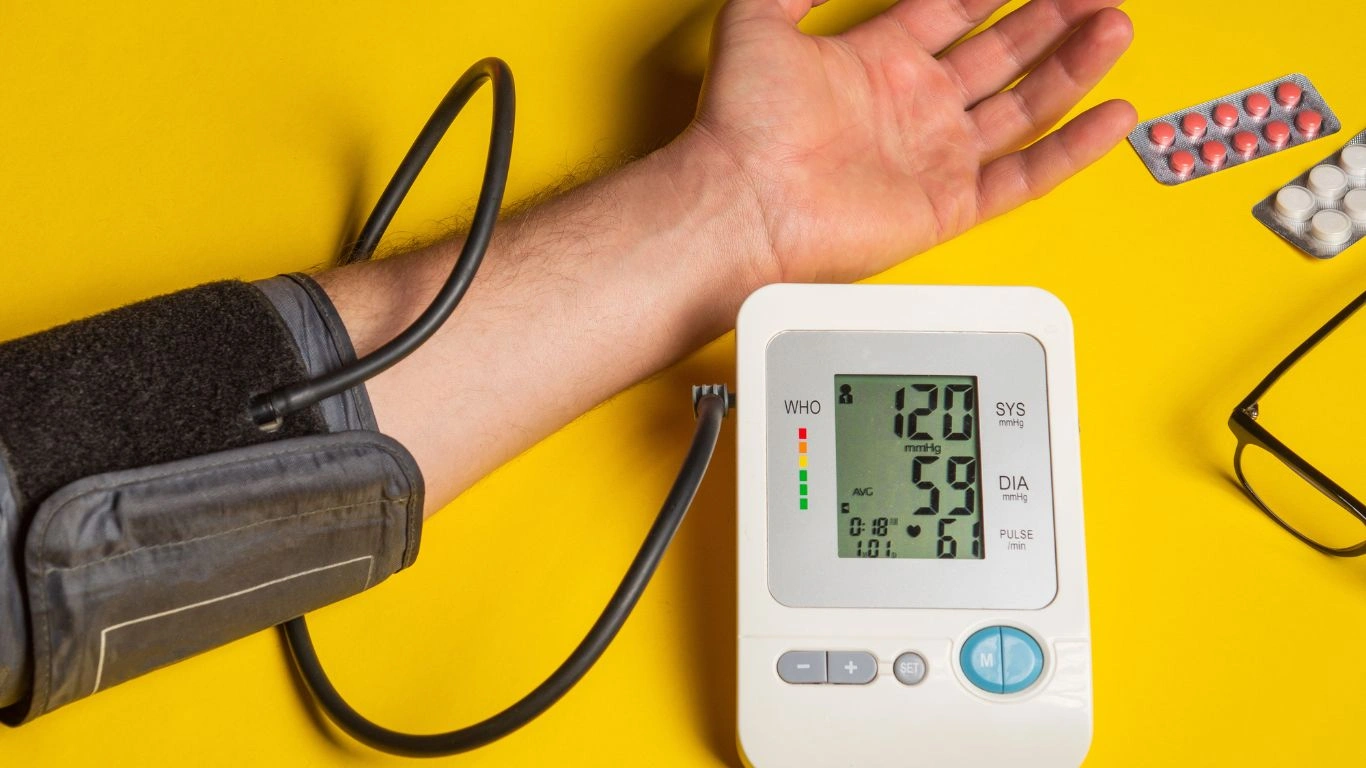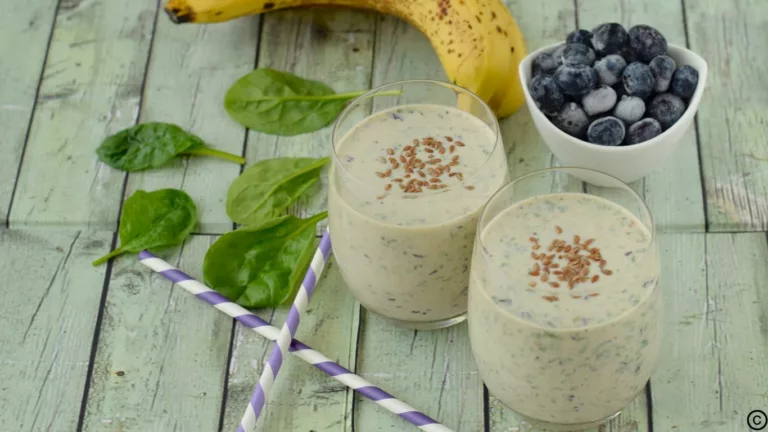Best Breakfast Cereals for Hypertension: Heart-Healthy Options to Lower Blood Pressure
If you have high blood pressure, you know how important it is to make smart dietary choices. Hypertension management isn’t just about cutting down on salt and staying active — what you eat matters too, especially when it comes to breakfast. One of the most common questions I get from my patients is, “What are the best breakfast cereals for hypertension?” Well, you’re in the right place! This article will dive deep into the best options for controlling blood pressure, taking into account both nutritional value and taste.
We’ll talk about what you should look for in a cereal, how some ingredients can work in your favor, and which breakfast cereals might help support your journey toward better heart health. So, grab a cup of coffee (or a healthy smoothie), and let’s explore how breakfast can be part of your hypertension management plan.
What to Look for in a Cereal for Hypertension

When choosing the best breakfast cereals for hypertension, it’s essential to look beyond just the packaging or the latest marketing hype. There are certain qualities you want to focus on to make sure you’re making a healthy choice for your blood pressure. Here’s what you should be looking for:
- Low Sodium: High sodium levels can contribute to higher blood pressure, so finding cereals with minimal or no added salt is crucial. Look for cereals that have less than 140 mg of sodium per serving. This might seem like a small number, but over time, it adds up!
- High Fiber: Fiber is a superstar when it comes to managing hypertension. Foods rich in fiber can help lower blood pressure by improving heart health and lowering cholesterol. Look for cereals with at least 3-5 grams of fiber per serving, especially if they are made from whole grains like oats or bran.
- Whole Grains: Whole grains contain more nutrients than refined grains, and they are great at supporting heart health. A good whole grain cereal will have the whole grain stamp on the packaging. Whole grains are also rich in magnesium, which helps regulate blood pressure.
- Minimal Added Sugars: It’s easy to be swayed by cereals that are packed with sugar, but these can do more harm than good, especially when you’re working on controlling your blood pressure. Try to choose cereals that have less than 5 grams of added sugar per serving to keep your blood sugar levels stable and avoid unnecessary calorie intake.
In my experience as a hypertension expert, many of my patients don’t realize how much their cereal choices can impact their blood pressure. By choosing cereals that meet these guidelines, you’re already on the right path. But let’s dive into some of the best breakfast cereal options for hypertension that hit all these marks.
Top Cereal Choices for Managing High Blood Pressure
1. Oatmeal: The Heart-Healthy Classic

Oatmeal is often my first recommendation for patients with high blood pressure. Why? Because oats are a rich source of soluble fiber, which has been shown to lower cholesterol and improve heart health. Additionally, oats contain beta-glucan, a specific type of fiber that can help regulate blood sugar levels and manage hypertension. The best part? You can customize your oatmeal however you like, from adding a handful of fresh berries to tossing in a spoonful of chia seeds for an extra fiber boost.
If you’re worried about sodium, opt for plain oats over flavored varieties. You can sweeten them naturally with cinnamon, a drizzle of honey, or even some mashed bananas. These small tweaks make your breakfast tasty, heart-healthy, and hypertension-friendly. Oatmeal is also a great source of magnesium, which plays an essential role in regulating blood pressure.
2. Bran Cereal: A Fiber-Packed Powerhouse

Another excellent option for those with hypertension is bran cereal. Bran flakes, in particular, are rich in both soluble and insoluble fiber, which are fantastic for digestion, heart health, and blood pressure management. Fiber helps to reduce cholesterol levels and also aids in keeping your gut healthy, which indirectly affects your overall cardiovascular health.
Bran cereals are often made from wheat bran or oat bran, both of which are high in magnesium — an important nutrient for lowering blood pressure. Bran cereals are also usually low in sugar, making them an ideal choice for people with hypertension. I always recommend choosing cereals with no added sugars, or adding your own sweeteners if needed.
3. Whole Grain Cereal with No Added Sugar
If you’re looking for a quick option, whole grain cereals with no added sugars are another great choice for hypertension. These cereals are typically made with a blend of whole grains like oats, barley, and quinoa. They offer a good mix of fiber, magnesium, and other essential nutrients, all while being low in sodium and free from added sugar.
Many whole grain cereals are also fortified with vitamins and minerals, like potassium, which can help regulate blood pressure. When choosing a whole grain cereal, make sure to check the ingredients for any hidden sugars. Often, cereals marketed as “healthy” can still contain sneaky amounts of sugar or preservatives, so be vigilant about reading labels.
4. Unsweetened Cornflakes
Now, I know cornflakes are often seen as a simple option, but they can be part of a heart-healthy breakfast when chosen wisely. The key is to choose unsweetened cornflakes that are made with whole corn and are free from added sugars or salt. They’re a good source of fiber and provide the necessary whole grains to help stabilize your blood pressure over time.
Since cornflakes can sometimes taste a bit bland on their own, I suggest adding some fresh fruit or a sprinkle of ground flaxseed. These little additions will not only enhance the flavor but also give you a boost of antioxidants, omega-3 fatty acids, and extra fiber — all of which support healthy blood pressure levels.
How Breakfast Cereal Affects Your Hypertension
By now, you might be wondering, “Why is all this cereal talk so important?” Well, the truth is, the first meal of the day has a lasting effect on your blood pressure throughout the day. Starting your morning with a fiber-rich, low-sodium, and nutrient-packed cereal helps set the tone for your entire day. It provides you with the fuel your body needs to maintain healthy blood pressure and overall well-being.
Incorporating these types of cereals into your daily routine doesn’t just benefit your heart — it also helps you manage your weight and cholesterol levels, which are both closely tied to hypertension. Plus, they’re easy to prepare, affordable, and can be mixed and matched with various toppings to keep things exciting.
Incorporating Heart-Healthy Toppings to Boost Your Cereal

Now that we’ve covered some of the best cereals to support your blood pressure, let’s talk about how you can level up your breakfast. While choosing the right cereal is a great start, adding heart-healthy toppings can make a big difference in boosting the nutritional value of your meal. The right toppings not only improve flavor but also provide extra vitamins, minerals, and fiber to further support your hypertension management.
Here are some of my favorite topping ideas that can help you build a more nutritious, heart-healthy bowl of cereal:
- Fresh Berries: Berries like strawberries, blueberries, and raspberries are rich in antioxidants and flavonoids, which have been shown to lower blood pressure. They’re also naturally sweet, which means you can cut back on added sugars without sacrificing flavor. Add a handful of berries to your cereal for a refreshing burst of color and nutrients.
- Bananas: Bananas are high in potassium, an essential mineral that helps regulate fluid balance and blood pressure. Potassium helps counteract the effects of sodium, so it’s a great addition to any hypertension-friendly meal. Slice a banana on top of your cereal for a naturally sweet and creamy topping.
- Chia Seeds or Flaxseeds: These tiny seeds pack a punch when it comes to heart health. Both chia and flaxseeds are high in omega-3 fatty acids, which help reduce inflammation and improve overall cardiovascular health. They also provide extra fiber and protein, which are beneficial for keeping you full longer.
- Nuts and Seeds: Almonds, walnuts, and sunflower seeds are rich in healthy fats, fiber, and antioxidants. Walnuts, in particular, are known for their ability to lower blood pressure and support heart health. Sprinkle a small handful of nuts or seeds on your cereal to add crunch, flavor, and more nutrients.
- Greek Yogurt: If you’re craving something creamy, try topping your cereal with a dollop of unsweetened Greek yogurt. Greek yogurt is rich in protein and probiotics, which support digestive health and heart function. It’s also lower in sugar compared to regular yogurt, making it a better option for blood pressure control.
As you can see, the options are endless when it comes to enhancing your cereal. By incorporating a mix of fruits, seeds, and healthy fats, you can create a breakfast that not only tastes amazing but also supports your blood pressure management. And let’s be honest, it keeps your morning routine interesting!
Why Potassium-Rich Foods Matter for Hypertension

Speaking of bananas, let’s take a moment to talk about the important role potassium plays in managing high blood pressure. As a hypertension expert, I often emphasize the importance of this mineral to my patients, and it’s one of the first things I recommend they focus on when trying to control their blood pressure naturally. Potassium works by helping your kidneys balance sodium levels and by relaxing your blood vessel walls, which ultimately reduces strain on your heart.
Many people with hypertension struggle to get enough potassium, even though it’s widely available in various foods. Including potassium-rich foods like bananas, sweet potatoes, spinach, and avocados can help you reach your target intake. In fact, studies have shown that increasing potassium intake while reducing sodium intake can significantly lower blood pressure.
If you’re wondering how this connects to breakfast cereals, it’s simple: many of the recommended cereals—like oatmeal, bran flakes, and whole grain cereals—are great sources of magnesium, but they often don’t have much potassium on their own. That’s why it’s essential to complement your cereal with potassium-rich toppings, like the ones I mentioned earlier. A balanced breakfast that includes both magnesium and potassium will provide maximum benefits for your blood pressure.
How to Read Nutrition Labels for Blood Pressure-Friendly Cereals
Now, let’s talk about something that trips up a lot of people: reading nutrition labels. If you’re not familiar with how to read the fine print, it’s easy to get lost in all the numbers and claims on the packaging. But don’t worry — I’m here to help you navigate the label and find the best cereals for your hypertension.
Here are the key components of a nutrition label to focus on when you’re shopping for a hypertension-friendly cereal:
- Serving Size: Always check the serving size to make sure you’re comparing like-to-like. Sometimes, the serving size on the label might be smaller than what you typically eat, so keep that in mind when evaluating calories and nutrients.
- Sodium: As we discussed earlier, too much sodium is a major contributor to high blood pressure. Look for cereals that have less than 140 mg of sodium per serving. Some cereals can be surprisingly high in sodium, so always double-check the label.
- Fiber: Aim for at least 3-5 grams of fiber per serving. The higher the fiber content, the better it is for your blood pressure and overall health. Fiber helps lower cholesterol, which is another factor that can affect your heart health.
- Added Sugars: Be wary of cereals with high sugar content. Look for cereals with less than 5 grams of added sugar per serving. Remember, many cereals have natural sweetness from fruit or whole grains, so added sugars are often unnecessary.
- Whole Grains: Make sure the first ingredient listed is a whole grain, like oats, barley, or quinoa. These grains are more nutrient-dense than refined grains and contain heart-healthy magnesium.
By reading labels carefully and focusing on these key areas, you can make more informed decisions and choose cereals that align with your health goals. It’s a small step, but it can make a world of difference in managing your blood pressure.
Why You Should Avoid Certain Breakfast Cereals for Hypertension
Of course, not all cereals are created equal, and there are some that you should avoid, especially if you’re trying to manage hypertension. I know it can be tempting to grab that brightly colored box of sugary cereal on the shelf, but those options are often loaded with salt, sugar, and unhealthy fats that can wreak havoc on your blood pressure.
Here are a few red flags to watch out for when choosing cereals:
- High Sugar Content: Some cereals are loaded with sugar, which not only contributes to weight gain but also spikes blood sugar levels. This can make it harder for your body to manage blood pressure. Avoid cereals with more than 10 grams of added sugar per serving.
- Excessive Sodium: Cereals that are high in sodium can raise your blood pressure over time. Steer clear of cereals that contain more than 200 mg of sodium per serving, especially if you’re sensitive to sodium.
- Refined Grains: Cereals made with refined grains, like white rice or processed wheat, lack the fiber and nutrients found in whole grains. These are best avoided in favor of whole grain cereals that provide better support for your blood pressure.
It’s important to be mindful of these factors when shopping for cereal. Even though some cereals may seem like “healthier” options because they’re marketed as high in fiber or low in calories, they may still contain hidden sugars, unhealthy fats, and excessive sodium.
Creative Ways to Enjoy Hypertension-Friendly Cereal

At this point, you probably have a good idea of which cereals are best for hypertension, the kinds of toppings you can add to boost nutrition, and how to read nutrition labels. But let’s face it — eating the same thing every day can get a bit boring, even if it’s healthy. The good news? There are countless creative ways to enjoy your favorite breakfast cereals while still keeping your blood pressure in check. Let me share some of my top ideas to make your cereal a bit more exciting and varied without losing the health benefits.
1. Cereal Parfaits
If you want to take your cereal up a notch, consider making a cereal parfait. Layer your favorite cereal with Greek yogurt, fresh berries, and a drizzle of honey for a satisfying, heart-healthy breakfast that keeps you full for hours. The combination of protein from the yogurt, antioxidants from the berries, and fiber from the cereal makes this an amazing breakfast choice for hypertension. You can even add some chia or flaxseeds for a boost of omega-3s!
My patients love this variation because it’s like having a fun treat but without all the added sugar and empty calories found in traditional breakfast options. Plus, parfaits are super customizable, so you can easily swap out the ingredients based on your preferences or what you have on hand.
2. Cereal Smoothie Bowls
For a refreshing twist, try making a smoothie bowl using your favorite breakfast cereal. Blend frozen fruits (think: mango, berries, or banana) with a bit of almond milk or low-fat yogurt, then top it with a handful of cereal, seeds, and nuts. The cold, creamy texture of the smoothie combined with the crunch of the cereal makes for a delightful contrast that’s both nutritious and fun to eat. It’s an excellent way to get a serving of fruits and vegetables while keeping your blood pressure in check.
And don’t be afraid to get creative with your toppings. Add some shredded coconut, a sprinkle of cinnamon, or even a dollop of almond butter for an extra punch of flavor and nutrition. Smoothie bowls are also great because you can adjust the ingredients to meet your personal dietary needs, whether you’re trying to boost potassium, fiber, or healthy fats.
3. Overnight Oats with Cereal
If you’re short on time in the mornings but still want a healthy, heart-friendly breakfast, try making overnight oats. It’s a no-cook option that’s perfect for busy mornings. Just combine oats with your favorite milk (dairy or plant-based), and add some chia seeds, flaxseeds, or a few scoops of protein powder. Top it off with your preferred cereal, fresh fruit, and a sprinkle of cinnamon for flavor.
Overnight oats are super easy to prepare the night before, which means all you have to do in the morning is grab and go. This is a great way to get in some healthy fats, fiber, and potassium, while also indulging in the crunchy texture of your chosen cereal.
The Link Between Hypertension and Gut Health
You might be surprised to learn that your gut health plays a huge role in managing hypertension. Research has shown that a healthy gut microbiome is crucial for controlling blood pressure, as it helps regulate inflammation, the absorption of nutrients, and even how your body responds to stress. One way to support gut health is by incorporating high-fiber foods into your diet, and breakfast cereals made from whole grains are an excellent way to do that.
Fiber not only supports digestive health but also helps manage your blood sugar levels and cholesterol, two important factors in controlling hypertension. Whole grains, like oats and bran, are packed with soluble fiber, which is known to support heart health and lower cholesterol. By opting for fiber-rich cereals and adding gut-healthy toppings like Greek yogurt or a handful of chia seeds, you’re creating a breakfast that does double duty — supporting both your heart and gut health.
It’s also important to include fermented foods like kefir, kimchi, or sauerkraut into your diet, which provide probiotics that help maintain a healthy balance of gut bacteria. The better your gut health, the better your overall cardiovascular health will be.
References and Further Reading
If you’re looking for more information on how to manage hypertension through diet, I recommend checking out some reputable resources. These articles and studies provide deeper insights into how diet impacts blood pressure and offer practical tips on how to reduce hypertension risk through food:
- Understanding Hypertension
- CDC – High Blood Pressure Facts
- National Institutes of Health – Dietary Fiber and Hypertension
- American Heart Association – Eating to Lower Your Blood Pressure
Disclaimer
The information provided in this article is for educational purposes only and should not be considered as medical advice. Always consult with a healthcare professional or registered dietitian before making any significant changes to your diet, especially if you are managing a health condition like hypertension. While the foods discussed in this article are generally known to be beneficial for hypertension management, individual needs and responses may vary. Your healthcare provider can help tailor dietary recommendations to suit your specific health requirements.

Dr. Gwenna Aazee is a board-certified Internal Medicine Physician with a special focus on hypertension management, chronic disease prevention, and patient education. With years of experience in both clinical practice and medical writing, she’s passionate about turning evidence-based medicine into accessible, actionable advice. Through her work at Healthusias.com, Dr. Aazee empowers readers to take charge of their health with confidence and clarity. Off the clock, she enjoys deep dives into nutrition research, long walks with her rescue pup, and simplifying medical jargon one article at a time.






